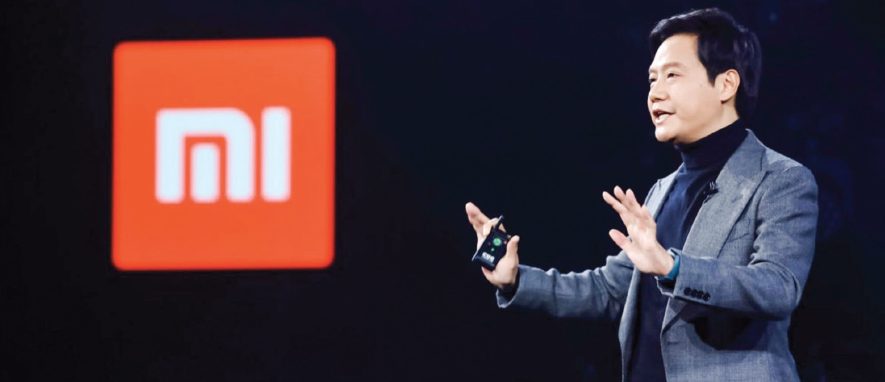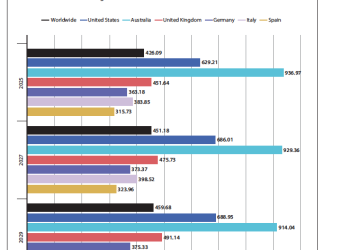
Lei Jun, Founder, Chairman and CEO, Xiaomi Corporation.
Lei Jun, the founder, chairman, and CEO of Xiaomi Corporation, is a rare breed of entrepreneur who has disrupted multiple industries—from software to smartphones, AIoT (Artificial Intelligence + Internet of Things), and now electric vehicles (EVs). Under his leadership, Xiaomi grew from a startup selling budget smartphones online into a global tech giant valued at over $50 billion. Lei Jun is making his most ambitious bet yet: taking Xiaomi into the electric vehicle industry, directly competing with Tesla, BYD, and traditional automakers. This move is not just about selling cars; it’s about integrating smartphones, AI, and IoT into the next generation of mobility. For CEOs and business leaders, his journey offers powerful insights on disruption, agility, and long-term vision—key traits for thriving in the fast-evolving tech landscape.
Lei Jun’s Journey: From Software Engineer to Business Mogul
Humble Beginnings and Early Success: Lei Jun was born in 1969 in Xiantao, Hubei province, China, and displayed a strong interest in technology from an early age. He studied computer science at Wuhan University, where he was influenced by the works of Bill Gates and Steve Jobs. In 1992, he joined Kingsoft, a Chinese software company, and quickly rose to CEO in 1998. Under his leadership, Kingsoft became a major competitor to Microsoft in China with its WPS Office software suite. Lei also founded Joyo. com, an online bookstore, which he later sold to Amazon for USD 75 million in 2004. By 2010, after a brief retirement, Lei Jun was ready for his biggest challenge yet: Xiaomi.
Xiaomi: The Disruptive Business Model that Redefined the Smartphone Industry
When Lei Jun founded Xiaomi in 2010, China’s smartphone market was dominated by Apple, Samsung, and local brands selling inferior products. Xiaomi revolutionized the market by:
Selling high-spec smartphones at near cost and monetizing software, apps, and services.
Using a direct-to-consumer online sales model, cutting retail costs and keeping prices low.
Engaging customers through community-driven marketing, making them feel like co-creators.
By 2014, Xiaomi had become China’s number one smartphone brand. By 2021, it overtook Apple and Samsung as the world’s top smartphone maker. Lei Jun had bigger ambitions: transforming Xiaomi into an AIoT ecosystem leader and a mobility powerhouse.
Beyond Smartphones: Xiaomi’s Smart Ecosystem Strategy
Recognizing the convergence of AI, IoT, and 5G, Lei Jun expanded Xiaomi beyond smartphones, creating a smart ecosystem that includes:
Wearables and Smart Devices: Mi Bands, smartwatches, and smart speakers.
Smart Home Products: TVs, security cameras, smart lighting, and air purifiers.
AI-Driven IoT: Over 600 million connected devices, making Xiaomi the world’s largest consumer AIoT platform.
This ecosystem gave Xiaomi an edge in data-driven personalization, paving the way for its next major leap: electric vehicles (EVs).
Lei Jun’s Biggest Bet: Xiaomi EVs and the Future of Smart Mobility
In March 2021, Lei Jun shocked the business world by announcing that Xiaomi would enter the EV industry with a USD 10 billion investment over the next decade. His vision: “The car of the future is not just a vehicle—it’s a smart mobile device.”

Xiaomi headquarters in Beijing.

Lei Jun, Founder and CEO, Xiaomi unveils the company’s first electric car in Beijing.
Xiaomi’s EV strategy is built on three pillars:
1. Smart Integration: A car that feels like a smartphone
Xiaomi aims to create an EV that seamlessly integrates with its existing AIoT ecosystem. Imagine stepping into a Xiaomi car where:
Your smartphone acts as a key and control center.
The car’s OS syncs with your smart home (e.g., turning on AC before arrival).
AI-powered features learn user behavior to enhance the driving experience.
2. Advanced Technology and In-House Innovation
Unlike traditional automakers, Xiaomi develops its core technologies in-house. Key areas of focus include:
Battery innovation: Xiaomi acquired DeepMotion, an autonomous driving startup, to develop high-efficiency batteries.
AI-assisted driving: The company is investing in Level 4 autonomous driving, competing with Tesla’s Full Self-Driving (FSD).
Cutting-edge design: Xiaomi’s first car, the SU7, is designed to rival the Tesla Model 3, with a sleek, aerodynamic build and high-performance specs.
3. Manufacturing at Scale
Lei Jun understands that EV success requires scale and efficiency. Xiaomi is building a dedicated EV factory in Beijing, with plans to produce 300,000 vehicles annually.
Xiaomi’s First Car: The SU7 – A Tesla Rival?
Xiaomi officially unveiled its first electric car, the Xiaomi SU7, in December 2023.
Key details:
Acceleration: 0-100 km/h in 2.78 seconds.
Battery Range: Over 800 km per charge.
Fast Charging: 220V fast-charging capability, with 50 percent charge in 15 minutes.
OS Integration: Runs on HyperOS for seamless Xiaomi connectivity.
Competitive advantage over Tesla and BYD
Price: Xiaomi aims to undercut Tesla’s pricing, offering premium features at a lower cost.
Ecosystem: No other EV brand offers the level of AIoT integration that Xiaomi does.
Brand Loyalty: With millions of Xiaomi smartphone users, converting them into Xiaomi car buyers is a strategic advantage.
Lessons from Lei Jun’s Leadership: What CEOs can learn
1. Ecosystem Thinking is the Future
Lei Jun’s biggest success is not selling phones—it’s building an interconnected ecosystem.
Lesson: Businesses should move beyond standalone products and create platforms that drive customer retention.
2. Cost Leadership without Compromising Quality
Xiaomi’s low-margin, high-volume model disrupts industries by offering premium products at mass-market prices.
Lesson: Focus on efficiency as well as scale instead of just high margins.
3. Direct-to-Consumer (DTC) + Community Engagement = Brand Loyalty
Xiaomi’s fan-driven marketing allows it to sell out products in seconds without traditional advertising.
Lesson: Build customer loyalty through direct engagement, not just marketing spend.
4. Agility and Speed in Innovation Xiaomi’s rapid pivots in smartphones, AIoT, and Evs highlight agile leadership. Lesson: Adapt quickly and pursue calculated risks, and forge ahead into new industries before competitors do.
5. Bold, Long-Term Vision Beats Short-Term Gains
Many CEOs focus on quarterly earnings, but Lei Jun is betting billions on a ten-year EV strategy.
Lesson: Build for the future, not just for today’s profits.

A comparison of Xiaomi SU7 vs. Tesla Model 3, showing its competitive edge.
What’s next for Lei Jun and Xiaomi?
With Xiaomi’s first EV launching in 2024, Lei Jun’s ultimate goal is clear: n Expand Xiaomi’s EV lineup to rival Tesla and BYD.
Advance AI and automation in self-driving technology.
Continue AIoT integration to make
Xiaomi cars an extension of its ecosystem.
For CEOs navigating rapid industry changes, Lei Jun’s journey is an essential case study in innovation, resilience, and future-thinking leadership.
From smartphones to smart mobility, Lei Jun isn’t just following industry trends—he’s shaping them.
The question now is: Will Xiaomi become the Tesla of China, or something even bigger?






